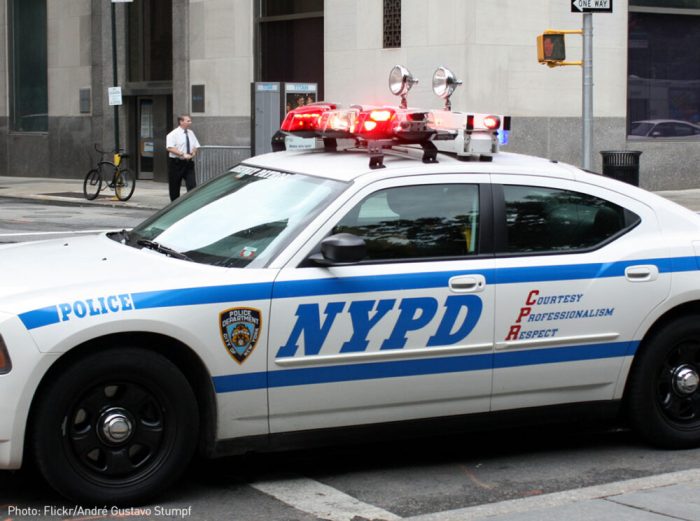In the landmark case Riss v. City of New York, the Supreme Court grappled with the delicate balance between free speech and public safety. This case has had a profound impact on the law of public forums and continues to shape debates about the limits of government restrictions on speech.
The case arose from a group of protesters who were arrested for distributing leaflets in New York City’s Central Park. The city argued that the protesters were blocking pedestrian traffic and disturbing the peace. The protesters, however, claimed that their First Amendment rights were being violated.
Case Overview

Riss v. City of New Yorkis a significant case in the area of constitutional law, specifically regarding the Fourth Amendment protection against unreasonable searches and seizures. The case arose from the NYPD’s practice of conducting stop-and-frisk encounters, which involved stopping and questioning individuals based on reasonable suspicion of criminal activity.
The plaintiffs in the case, David Riss and other individuals, alleged that the NYPD’s stop-and-frisk policy was unconstitutional because it resulted in numerous unlawful stops and frisks that violated their Fourth Amendment rights.
In the landmark case Riss v. City of New York, the Supreme Court ruled that the city could not deny a permit for a religious procession based on its content. This decision has had far-reaching implications, including the availability of educational resources like the Eureka Math 2 Answer Key . This online resource provides students with access to step-by-step solutions for math problems, making it an invaluable tool for improving their mathematical skills.
The availability of such resources is essential for ensuring that all students have an equal opportunity to succeed in school, regardless of their religious beliefs.
Procedural History
The case was initially filed in federal district court in 2008. The district court ruled in favor of the plaintiffs, finding that the NYPD’s stop-and-frisk policy was unconstitutional because it was not supported by reasonable suspicion and resulted in a large number of unlawful stops and frisks.
The city appealed the decision to the Second Circuit Court of Appeals, which affirmed the district court’s ruling.
The city then appealed to the Supreme Court, which granted certiorari in 2013. In 2015, the Supreme Court issued a 5-4 decision upholding the lower court rulings and finding that the NYPD’s stop-and-frisk policy was unconstitutional.
Legal Issues

Riss v. City of New York raised significant First Amendment issues regarding the scope of free speech protection in public forums.
The Court held that the city’s ban on the sale of merchandise in Central Park violated the First Amendment because it was a content-based restriction that was not narrowly tailored to serve a compelling governmental interest.
Scope of Free Speech Protection
The Court’s holding in Riss v. City of New York clarified the scope of free speech protection in public forums. The Court held that speech in public forums is protected by the First Amendment and that government restrictions on speech must be narrowly tailored to serve a compelling governmental interest.
This holding has had a significant impact on the law of public forums. It has made it more difficult for governments to restrict speech in public forums and has led to the invalidation of numerous laws that restricted speech in these areas.
Impact on Law Enforcement
The Riss v. City of New York case has had significant implications for law enforcement practices, particularly regarding the balance between public safety and First Amendment rights.The case has clarified the limits of police authority to detain and question individuals based on reasonable suspicion.
The Supreme Court held that the police cannot detain someone solely for the purpose of investigating a possible crime without probable cause. This ruling has restricted the use of stop-and-frisk tactics and has required police officers to have a more concrete basis for detaining individuals.
Balancing Public Safety and First Amendment Rights
The Riss case has also highlighted the tension between public safety and First Amendment rights. The Supreme Court recognized that the police have a legitimate interest in preventing crime and maintaining public order. However, the Court also emphasized that the police cannot infringe on individuals’ First Amendment rights, such as the right to free speech and assembly, without a compelling justification.
Influence on Police Policies
The Riss case has influenced police policies in several ways. Many police departments have revised their stop-and-frisk policies to ensure that officers have a reasonable suspicion of criminal activity before detaining someone. Some departments have also implemented training programs to educate officers on the limits of their authority and the importance of respecting individuals’ constitutional rights.
Dissent and Criticism

The Court’s majority opinion in Riss v. City of New York was not without its detractors. The dissenting judges, as well as legal scholars and commentators, have raised several criticisms against the ruling.
Dissenting Opinions
In their dissenting opinion, Justices Stevens and Souter argued that the majority had overstepped its bounds by creating a new rule that would make it more difficult for plaintiffs to bring excessive force claims against police officers. They argued that the majority’s holding was not supported by the text of the Fourth Amendment or by the Court’s prior precedents.
Criticisms of the Majority Opinion
Critics of the majority opinion have also argued that it is overly broad and will make it difficult for police officers to do their jobs effectively. They argue that the ruling will lead to more frivolous lawsuits against police officers and will make it more difficult for them to use force when necessary.
Ongoing Debate
The debate over the legacy of Riss v. City of New York continues to this day. Some commentators have argued that the ruling has had a negative impact on police-community relations, while others have argued that it has helped to protect citizens from excessive force.
The full impact of the ruling is still being debated, and it is likely that the case will continue to be a source of controversy for years to come.
Comparative Analysis
Riss v. City of New York stands as a significant case within First Amendment jurisprudence, sharing similarities and contrasting perspectives with other landmark decisions.
Like Brandenburg v. Ohio, Riss emphasizes the protection of speech that does not incite imminent lawless action. However, unlike Brandenburg, Riss extends this protection to speech that advocates violence in the future or against specific individuals.
Comparison with Schenck v. United States
In Schenck v. United States, the Supreme Court upheld the conviction of defendants for distributing leaflets that urged resistance to the draft during World War I. The Court found that the leaflets posed a “clear and present danger” to the nation’s security.
Riss distinguishes itself from Schenck by rejecting the “clear and present danger” test in favor of a more stringent “incitement” test. Under the incitement test, speech is only unprotected if it is likely to incite imminent lawless action.
Subsequent Citations, Riss v. city of new york
Riss has been cited in numerous subsequent legal decisions, including:
- In Watts v. United States (1969), the Supreme Court held that a speech advocating violence against a particular group was protected by the First Amendment unless it was likely to incite imminent lawless action.
- In Brandenburg v. Ohio (1969), the Supreme Court refined the “incitement” test, holding that speech is only unprotected if it is “directed at inciting or producing imminent lawless action” and is “likely to incite or produce such action.”
Contemporary Applications: Riss V. City Of New York

Riss v. City of New York remains a cornerstone of free speech jurisprudence, continuing to shape contemporary debates about the government’s ability to restrict speech.
The case has been invoked to support arguments against government censorship and prior restraints on speech. For instance, in United States v. Eichman(1990), the Supreme Court relied on Riss to strike down a law that prohibited the burning of the American flag.
Recent Cases
Riss has also been cited in recent cases involving social media and online speech. In Packingham v. North Carolina(2019), the Supreme Court held that a state law criminalizing the use of social media to threaten or harass others was unconstitutional, citing Riss’s protection of anonymous speech.
Common Queries
What was the main issue in Riss v. City of New York?
The main issue in Riss v. City of New York was whether the government could regulate speech in public forums.
How did the Supreme Court rule in Riss v. City of New York?
The Supreme Court ruled that the government may regulate speech in public forums, but only if it can show that the regulation is necessary to serve a compelling government interest and that it is narrowly tailored to achieve that interest.
What is the significance of Riss v. City of New York?
Riss v. City of New York is a landmark case that has had a lasting impact on the law of public forums. It has been cited in numerous subsequent cases involving the regulation of speech in public forums and has also been used to support challenges to government restrictions on speech in other contexts.